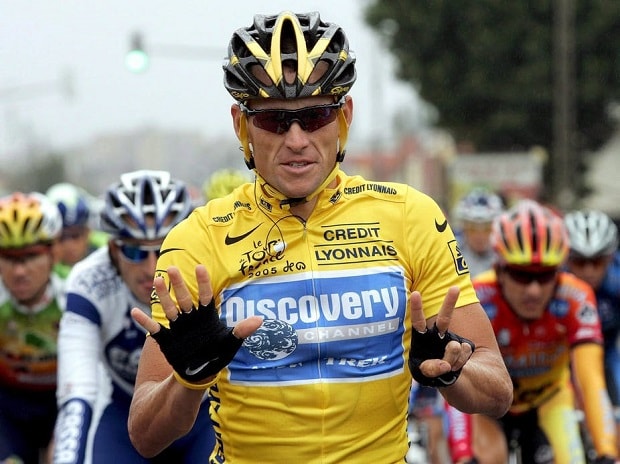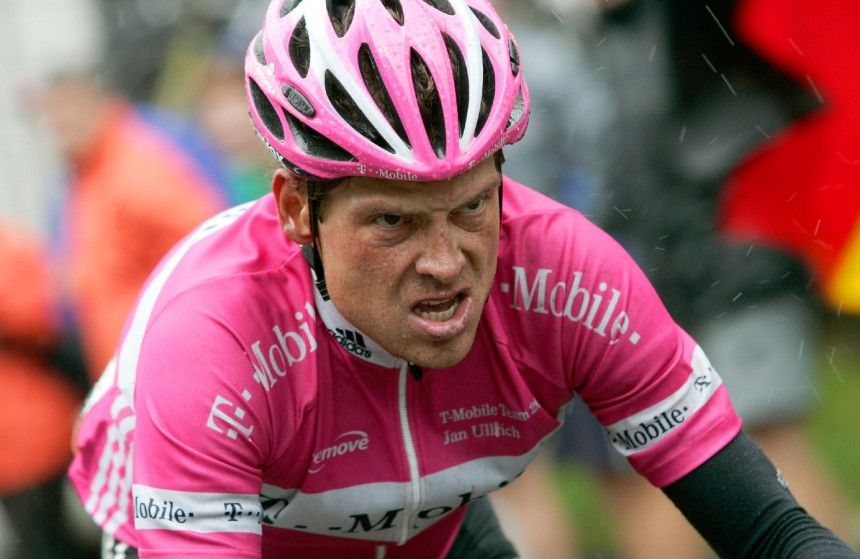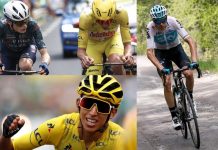1991: Armstrong is the U.S. amateur national champion at the age of 20.
1992: Turns pro and finishes last in his debut race in San Sebastian, Spain.
1993: Wins world championship. Enters his first Tour de France, where he wins a stage but drops out and doesn’t finish.
1995: Wins another Tour de France stage and finishes the race for the first time, in 36th place.
1996: Diagnosed with testicular cancer that has spread to his lymph nodes, lungs, brain and abdomen. Treatment includes chemotherapy, brain surgery and removal of a testicle.
1997: Establishes the Lance Armstrong Foundation (later renamed Livestrong) to benefit cancer patients and research.
1999: Wins first of seven consecutive Tour de France titles at age 27 and is almost immediately forced to defend against questions about doping, which he strongly denies. He tests positive for a corticosteroid but is allowed to show a back-dated prescription to avoid sanctions. The victory, coupled with his recovery from cancer, propels him toward international stardom.
2000: Wins second Tour de France and a bronze medal at the Sydney Olympic Games.
2002: Wins fourth consecutive Tour de France. A two-year investigation into whether the U.S. Postal Service team used performance-enhancing drugs in 2000 ends without finding any evidence.
2004: Wins record-setting sixth Tour de France.
2005: Wins seventh Tour de France and retires from cycling at age 33. French newspaper L’Equipe reports blood samples retested from 1999 race show EPO use that year. Armstrong denies the allegations.
2009: Comes out of retirement and finishes third in the Tour de France.
2010: Former Armstrong teammate Floyd Landis, who was stripped of the 2006 Tour de France title for doping, alleges Armstrong and the U.S. Postal team engaged in years of sophisticated performance-enhancing drug use. Landis files federal whistle-blower lawsuit.
2011: Armstrong again retires from cycling at age 39.
2012: A federal criminal investigation into doping includes interviews of witnesses close to Armstrong but closes without charges. The U.S. Anti-Doping Agency then charges Armstrong with cheating. Armstrong denies doping, but chooses not to fight the charges, prompting USADA to issue a lifetime ban on competition. USADA later releases a detailed report of doping allegations, including devastating sworn statements from several of Armstrong’s former teammates. Armstrong is pushed off the board of the Livestrong foundation and major sponsors Nike, Anheuser-Busch and Oakley cut ties with him. The International Cycling Union strips Armstrong of his Tour de France victories and bans him for life.
2013: Armstrong admits years of performance-enhancing drug use to Oprah Winfrey in a televised interview. The federal government joins the Landis lawsuit and says it intends to seek damages up to $100 million for breach of contract for cheating while racing under the U.S. Postal Service sponsorship.
2015: Armstrong is forced to pay $10 million in a fraud dispute with a promotions company that first sought to prove doping allegations in 2005. It is one of several legal cases that will cost Armstrong more than $20 million.
2018: Armstrong settles the whistleblower lawsuit for $5 million less than a month before a schedule May 7 trial. Landis eligible for up to 25 percent of the settlement.













